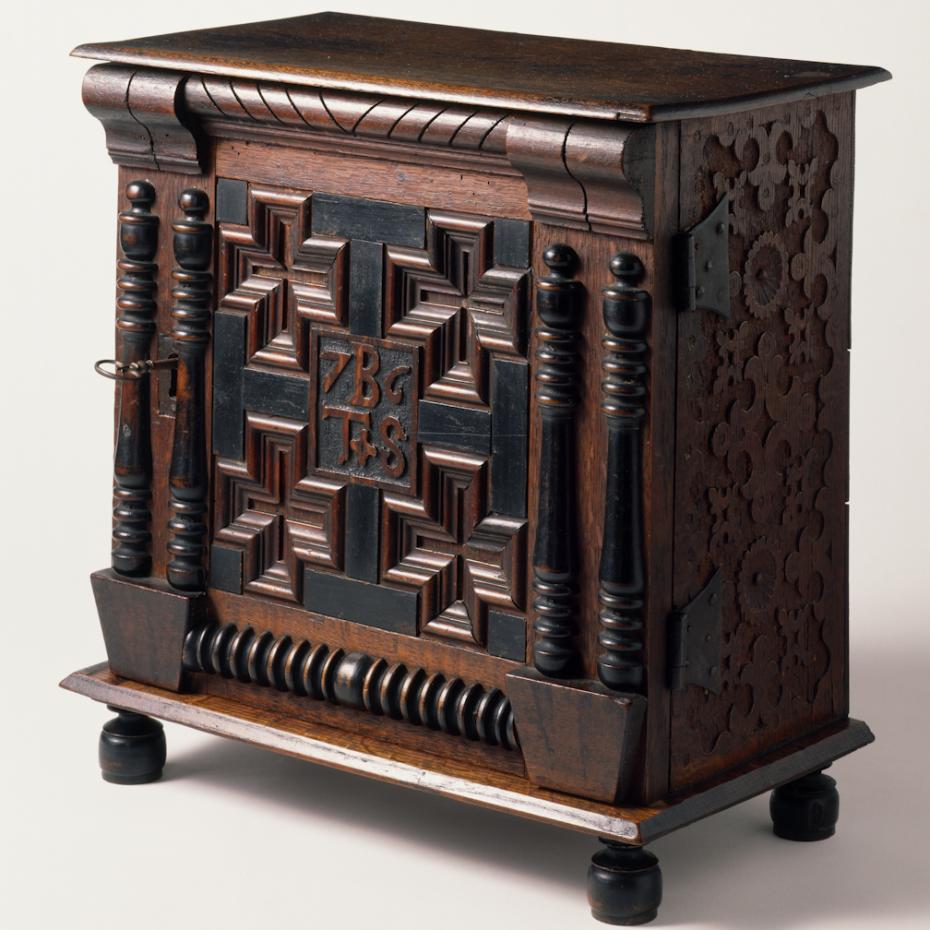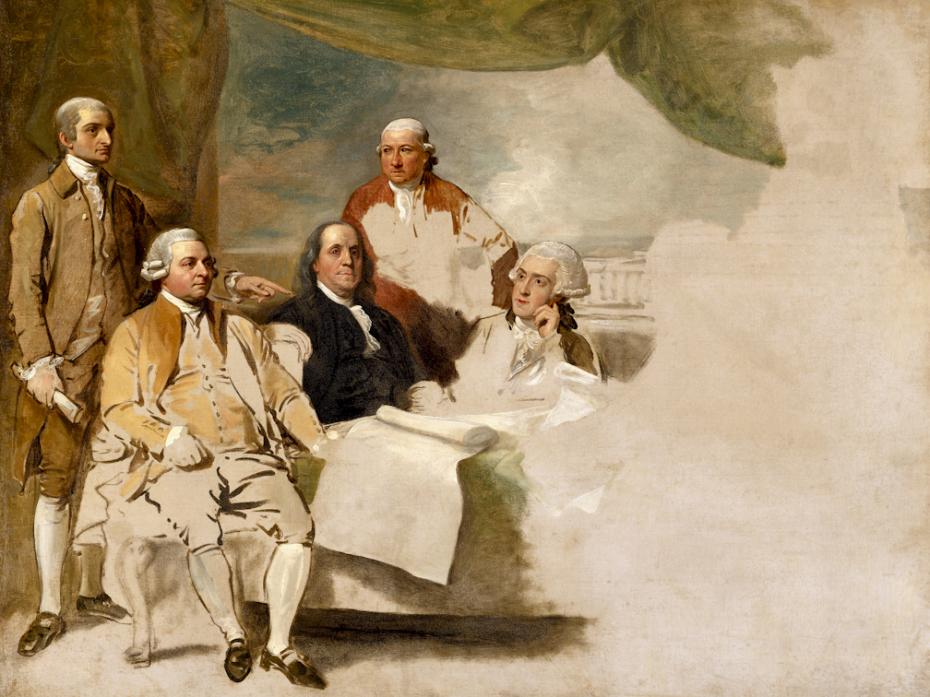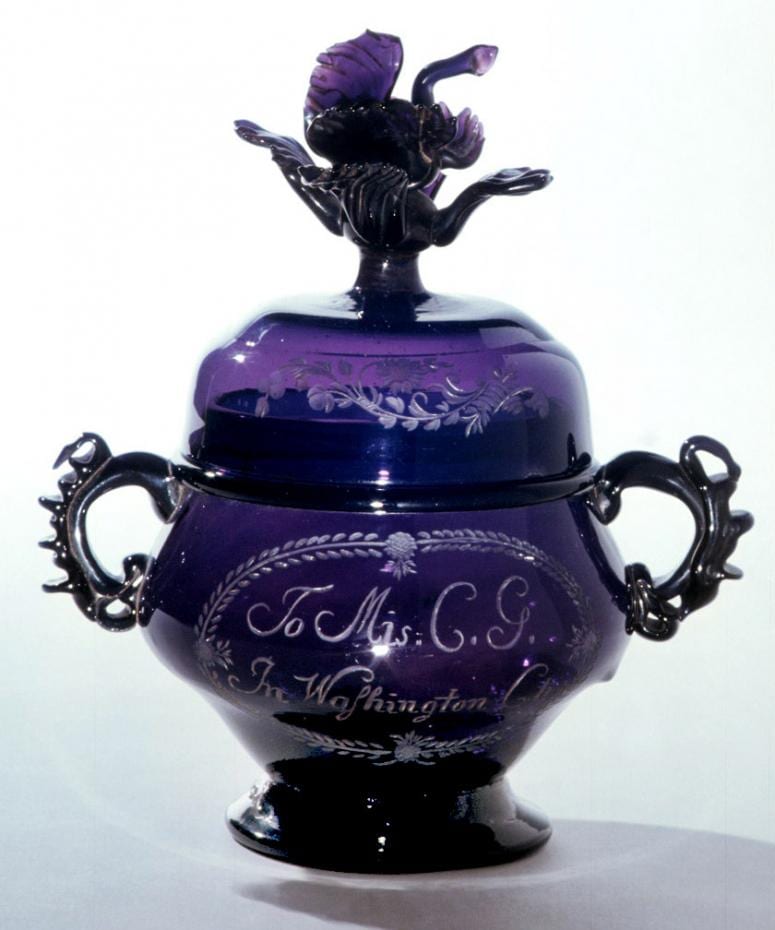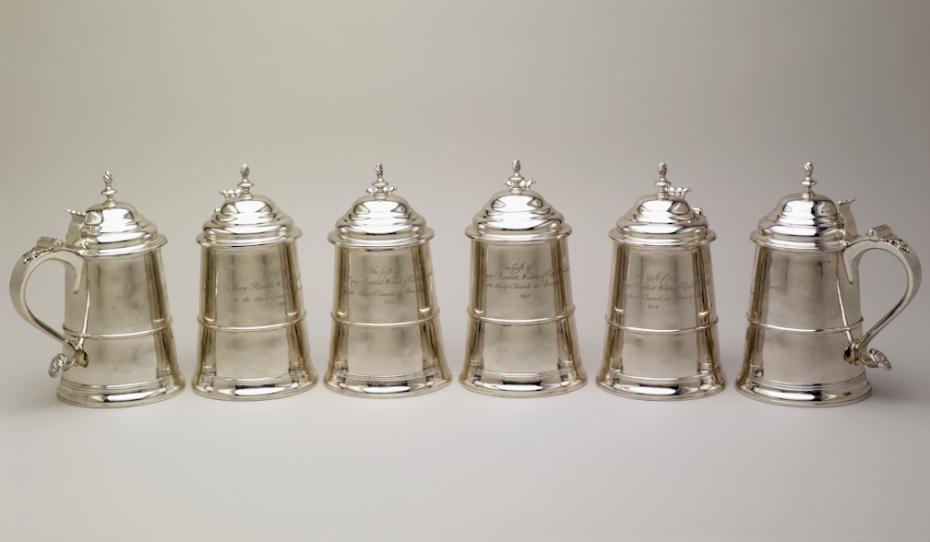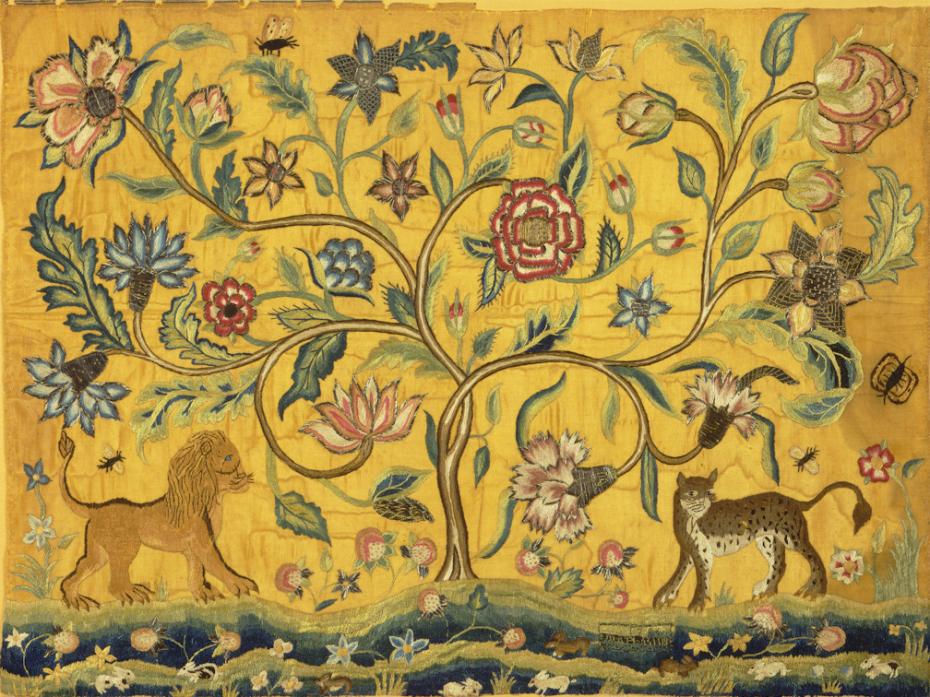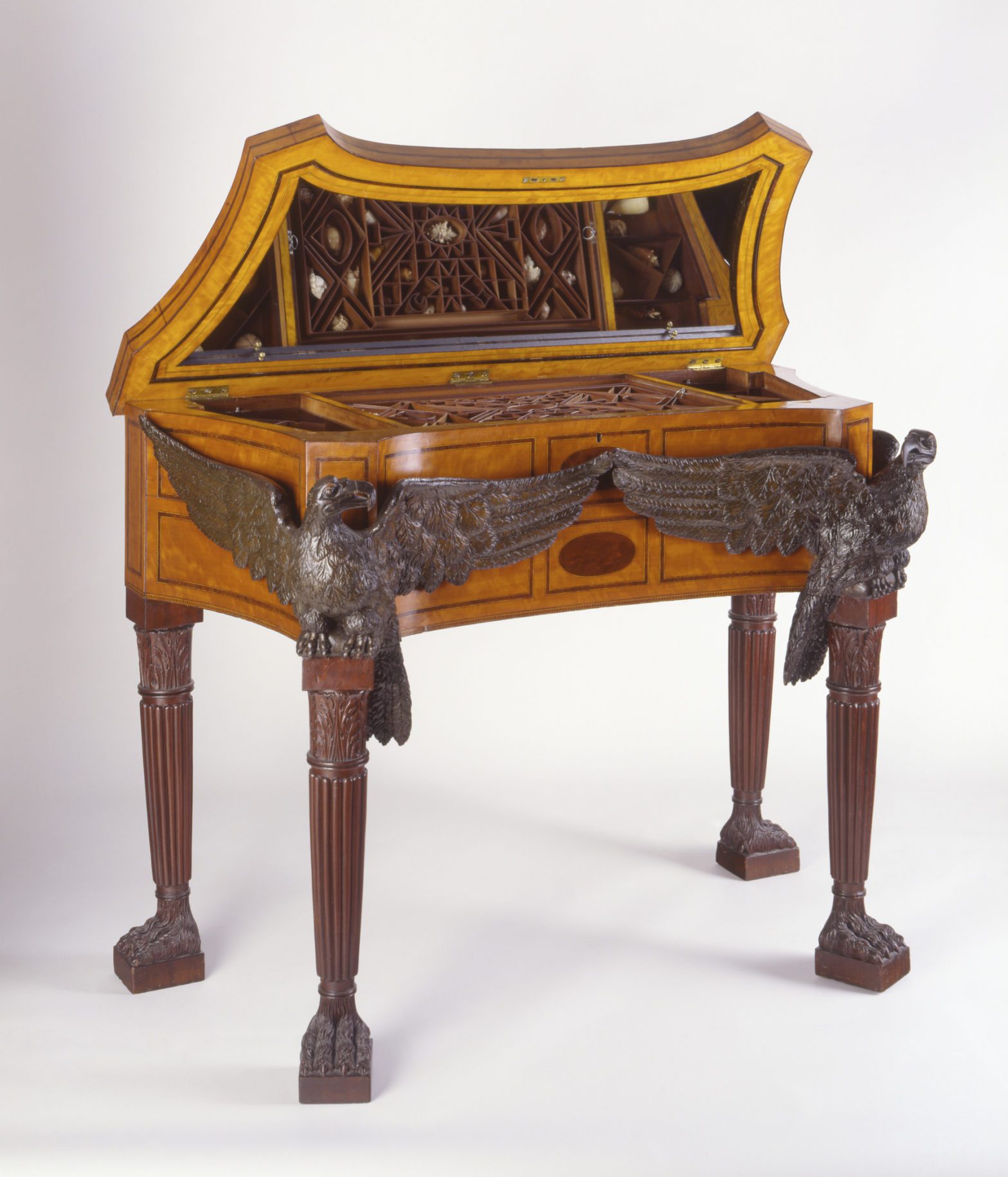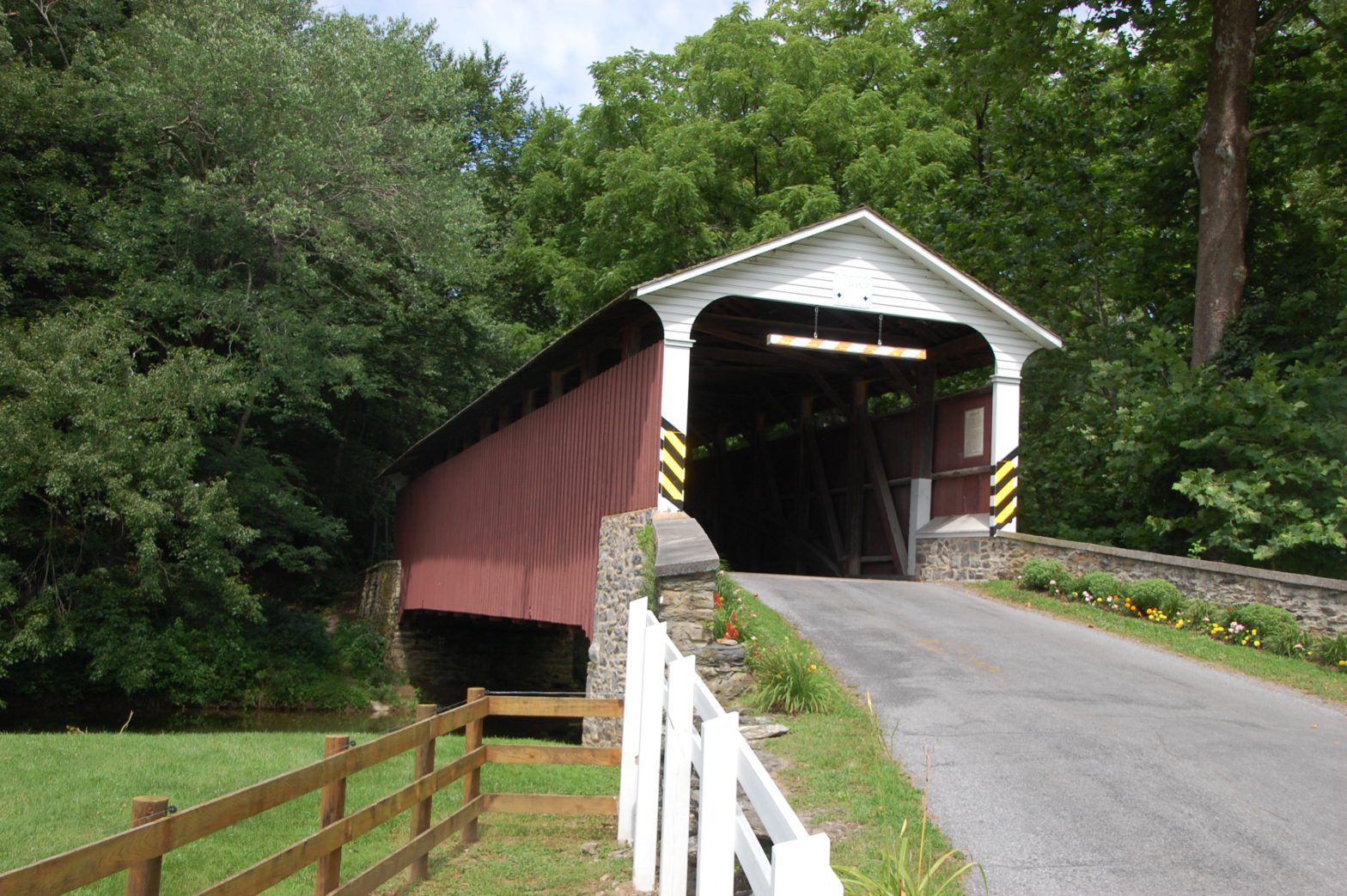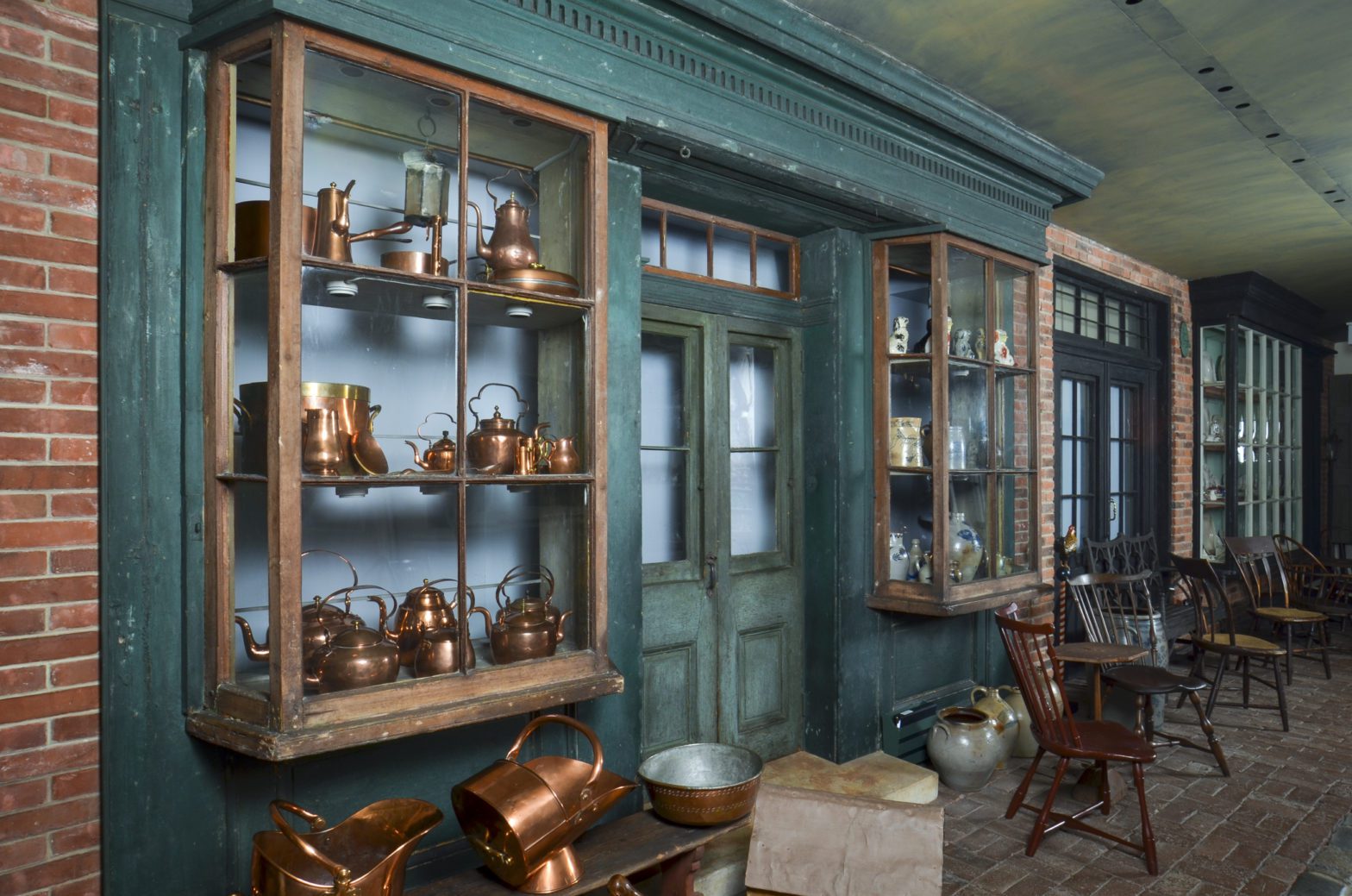Winterthur’s American furniture collection is the largest and arguably the finest in the country. With a wide range of regional and stylistic forms, the collection of more than 9,000 objects spans the mid-1600s to the 1870s.
Henry Francis du Pont began collecting furniture in the early 1920s with Windsor chairs, painted chests, and simple pine and maple pieces. Du Pont developed a passion for high-style Philadelphia rococo furniture, setting a record in 1929 when he paid $44,000 for the Turner-Van Pelt family high chest. He eventually acquired some of the choicest Philadelphia furniture dating from the 1730s to the 1770s.
Du Pont displayed his collection in rooms that he and his family lived and entertained in from 1931 until 1951. Much of this furniture resided in Winterthur’s principal entertaining spaces: the Port Royal Entrance Hall and Parlor, the Marlboro Room, and the Blackwell, Readbourne, and Chinese Parlors. Furniture owned by wealthy colonials such as the Dickinson, Gratz, Cadwalader, and Logan families are prized among the objects in these spaces.
Other furniture collection highlights include representative pieces of the finest New England furniture, especially from Newport, Boston, Salem, and Portsmouth. Works by well-known urban cabinetmakers such as Samuel McIntire, Thomas Seymour, and Thomas Affleck join examples from less urban makers like the Dunlaps of New Hampshire and Christian Seltzer of Lebanon County, Pennsylvania.
Federal and empire furniture from the early 1790s to the 1830s also has an important place in the collection. Since du Pont’s death, the empire furniture has been augmented with significant objects such as an exceptional Philadelphia sideboard attributed to Joseph Barry and once owned by Andy Warhol, an important dolphin-supported pier table, and more recently, a pair of Philadelphia armchairs with dolphin arm supports.
Winterthur’s location in northern Delaware gave du Pont easy access to the many dealers in southeastern Pennsylvania, so his collection developed a great strength in objects produced by the region’s ethnically and religiously diverse population.
Books about Winterthur Furniture
Downs, Joseph. American Furniture: Queen Anne and Chippendale Periods in the Henry Francis du Pont Winterthur Museum. New York: MacMillan Company, 1952.
Richards, Nancy E. and Nancy Goyne Evans. New England Furniture at Winterthur: Queen Anne and Chippendale Periods. Winterthur, Del.: Henry Francis du Pont Winterthur Museum, 1997.
Hummel, Charles F. A Winterthur Guide to Chippendale Furniture: Middle Atlantic and Southern Colonies. New York: Crown Publishers, Inc., 1976.
Montgomery, Charles F. American Furniture: The Federal Period in the Henry Francis du Pont Winterthur Museum. New York: Viking Press, Inc., 1966.
Top Image: Cabinet. Attributed to the Symonds Shop, Salem, Massachusetts; dated 1676. Red oak, red cedar, soft maple. Height: 17 ¼” (43.8cm). 1958.526
